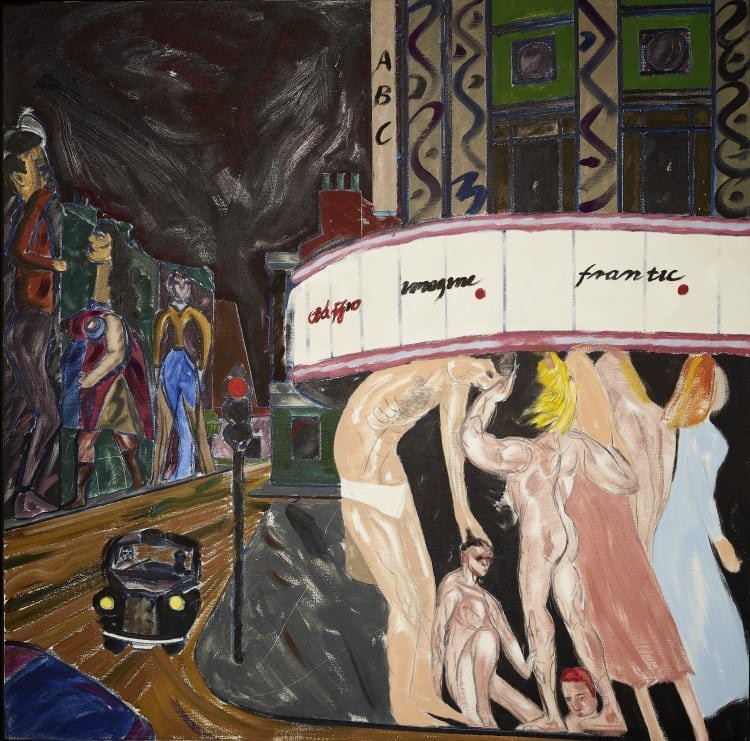R.B. KITAJ AT PIANO NOBILE
R. B. Kitaj, Fulham Road Cinema Bathers, 1988. Oil on canvas, 153.7 x 154.3 cm. Copyright the artist
Piano Nobile have announced their representation of the estate of the late American-born painter R.B. Kitaj, who spent the bulk of his prolific working life in England.
Kitaj was known as ‘Ron’ to his good friends, who included David Hockney, with whom he attended the Royal College of Art after leaving the US army in 1963 (he had also had a spell as a merchant seaman). Hockney wrote in 2017 ‘Ron was a huge influence on me, more than any other factor.’
He was a fine draftsman – one of the very best of his generation – described as being ‘on a par with Degas’. He developed an extremely personal style, using a montage practice, which he called ‘agitational usage’. His paintings were highly personal, reflecting a deep interest in political, cultural and social history, and identity.
Invited in 1976 by the Arts Council to select a group of British works connected by a common theme, he curated the seminal exhibition The Human Clay, choosing pieces by Maggi Hambling, William Roberts and Richard Carline, championing figurative art over abstract, which was dominant in that period. In his catalogue essay he invented the phrase ‘School of London’, to describe likeminded painters such as Bacon, Freud, Auerbach, Kossoff, Moore, Hodgkin, Hockney and himself.
In 1985 he became the first American to be elected to the Royal Academy since John Singer Sargent.
His major retrospective in the Tate in 1994, however, gathered a pile-on of savagely negative reviews, particularly from the Evening Standard’s Brian Sewell. Kitaj blamed his second wife’s sudden death on the reception to this show, and soon after returned to live in the United States. He referred to the episode as ‘The Tate War’ and it became a central theme to his later work.
He died in Los Angeles in 2007, aged 74.

